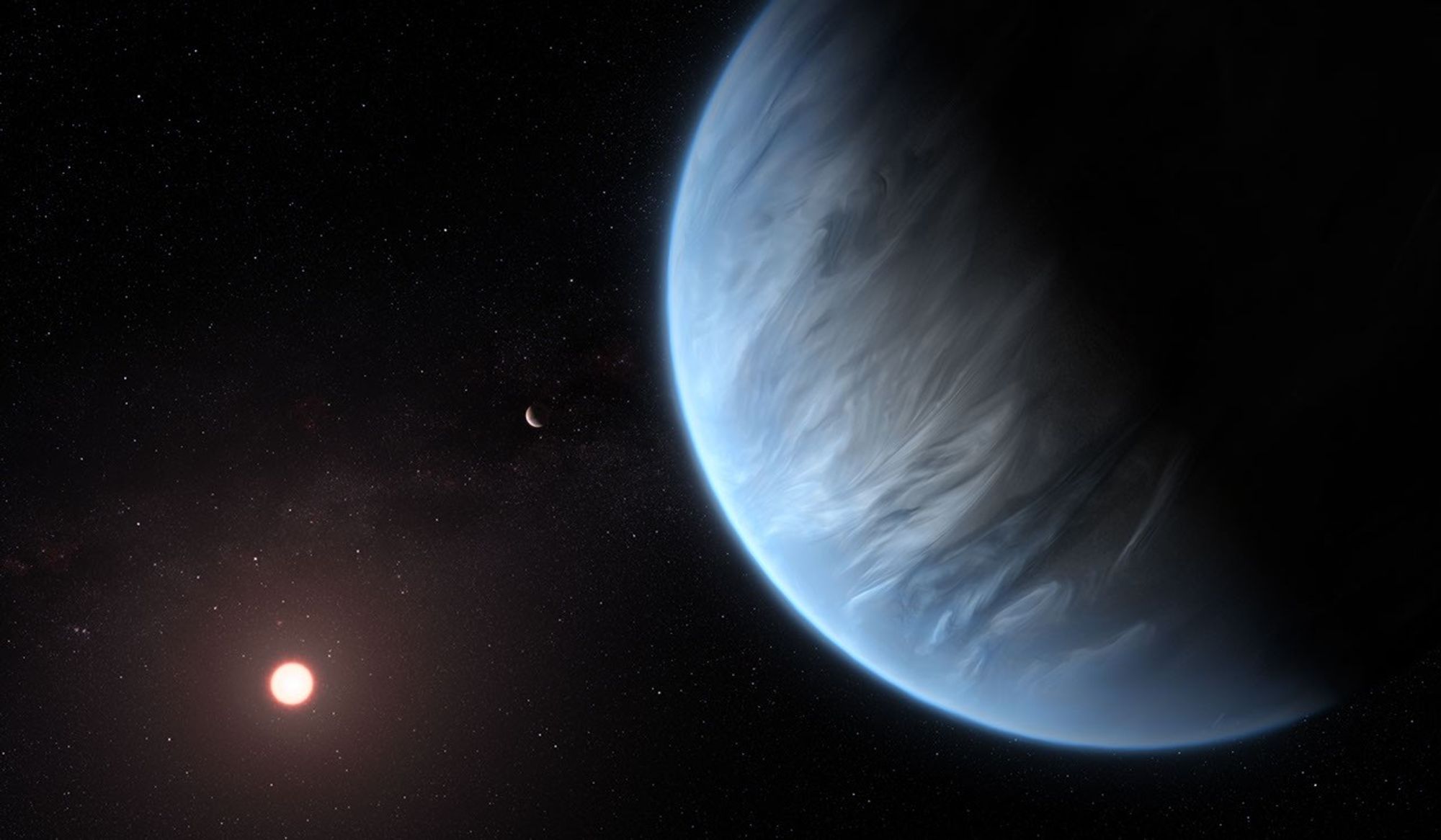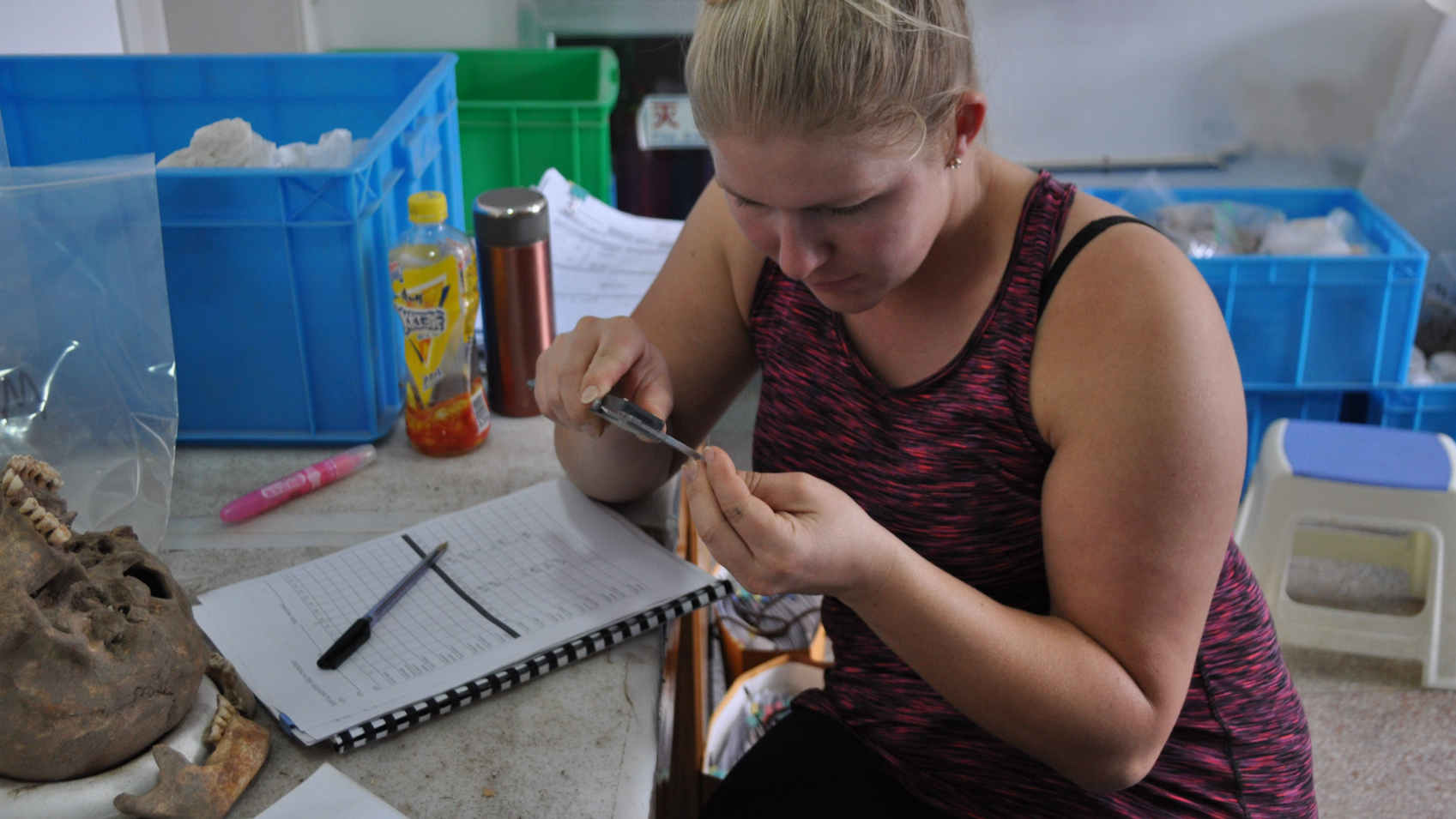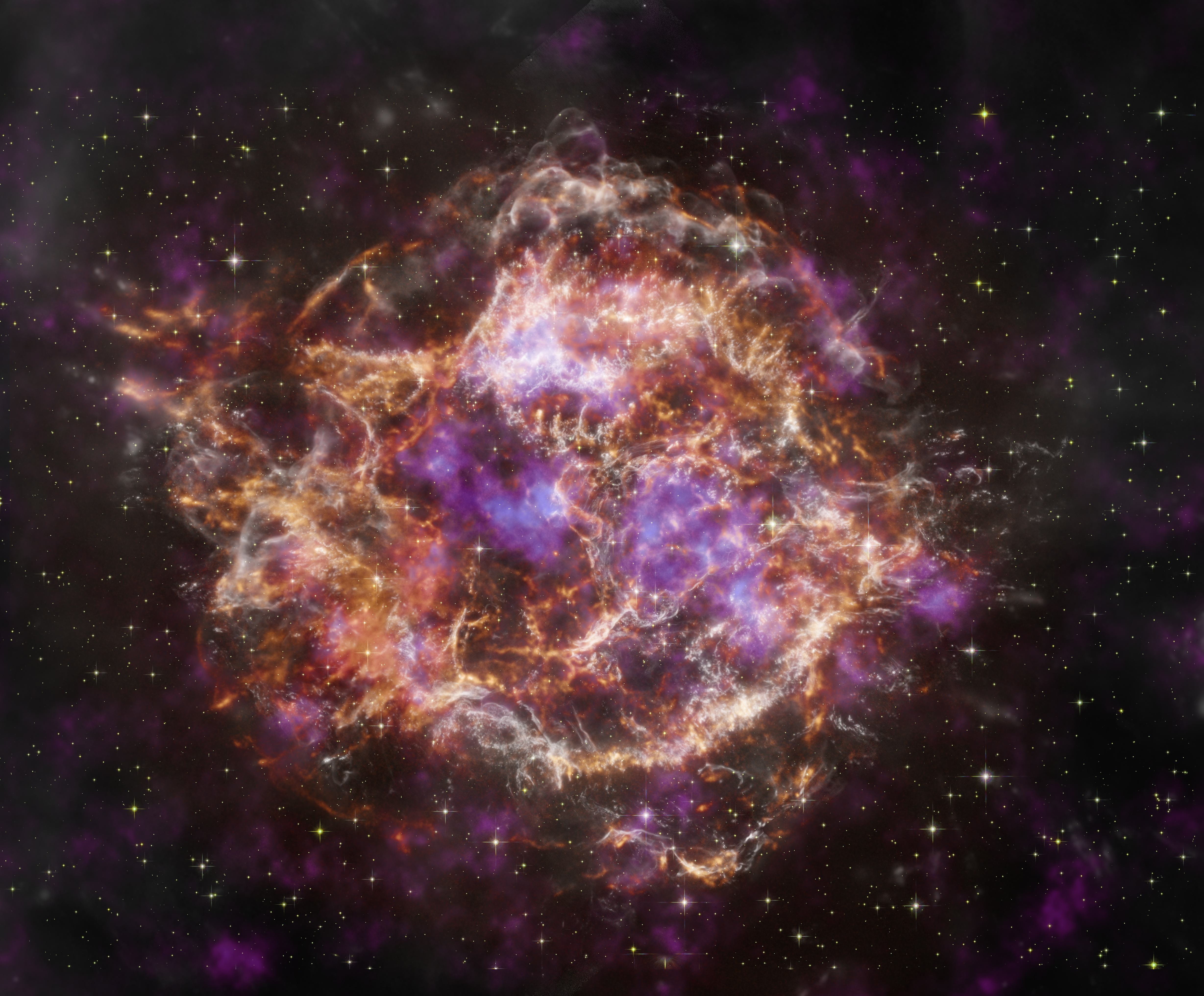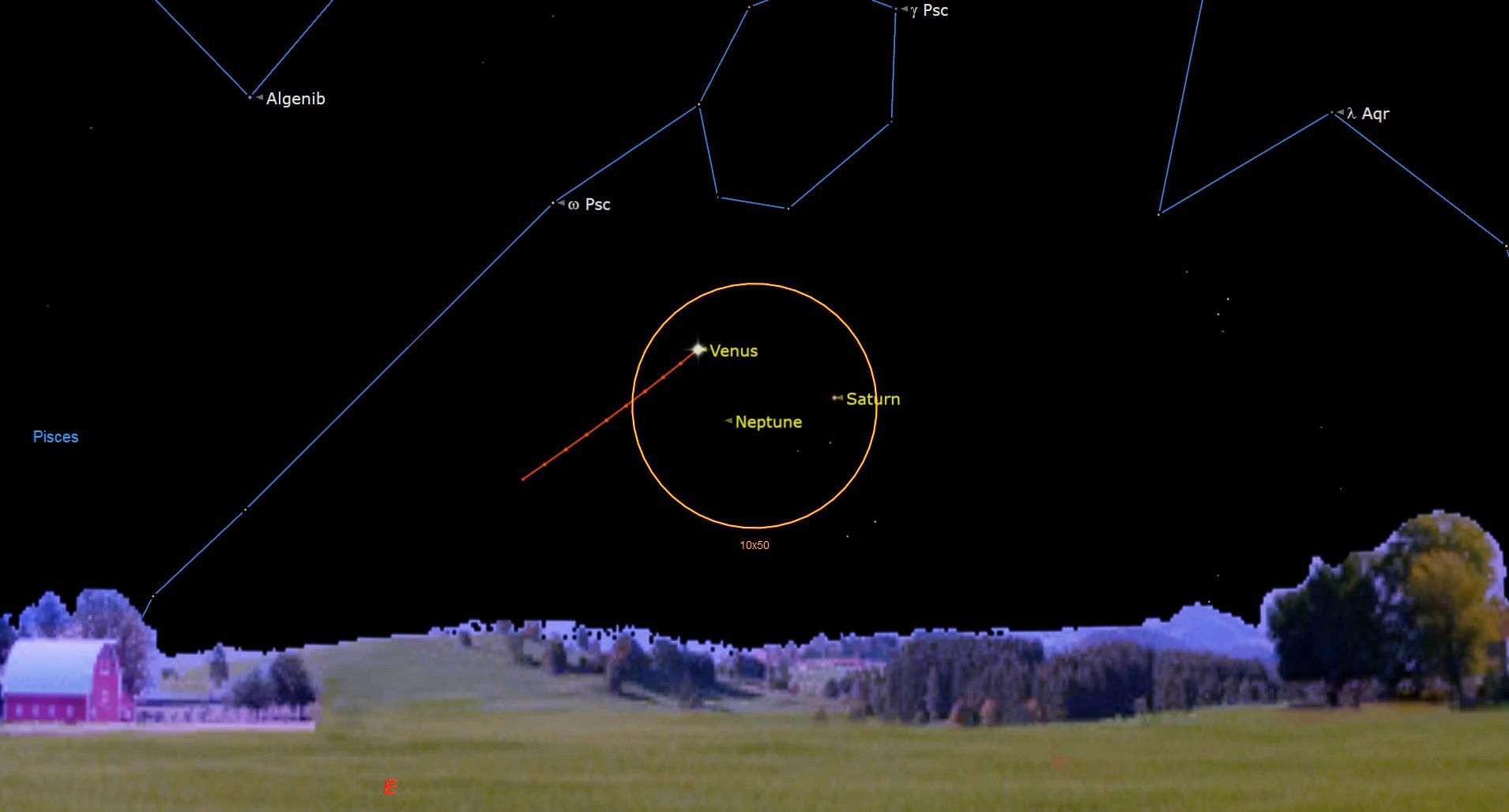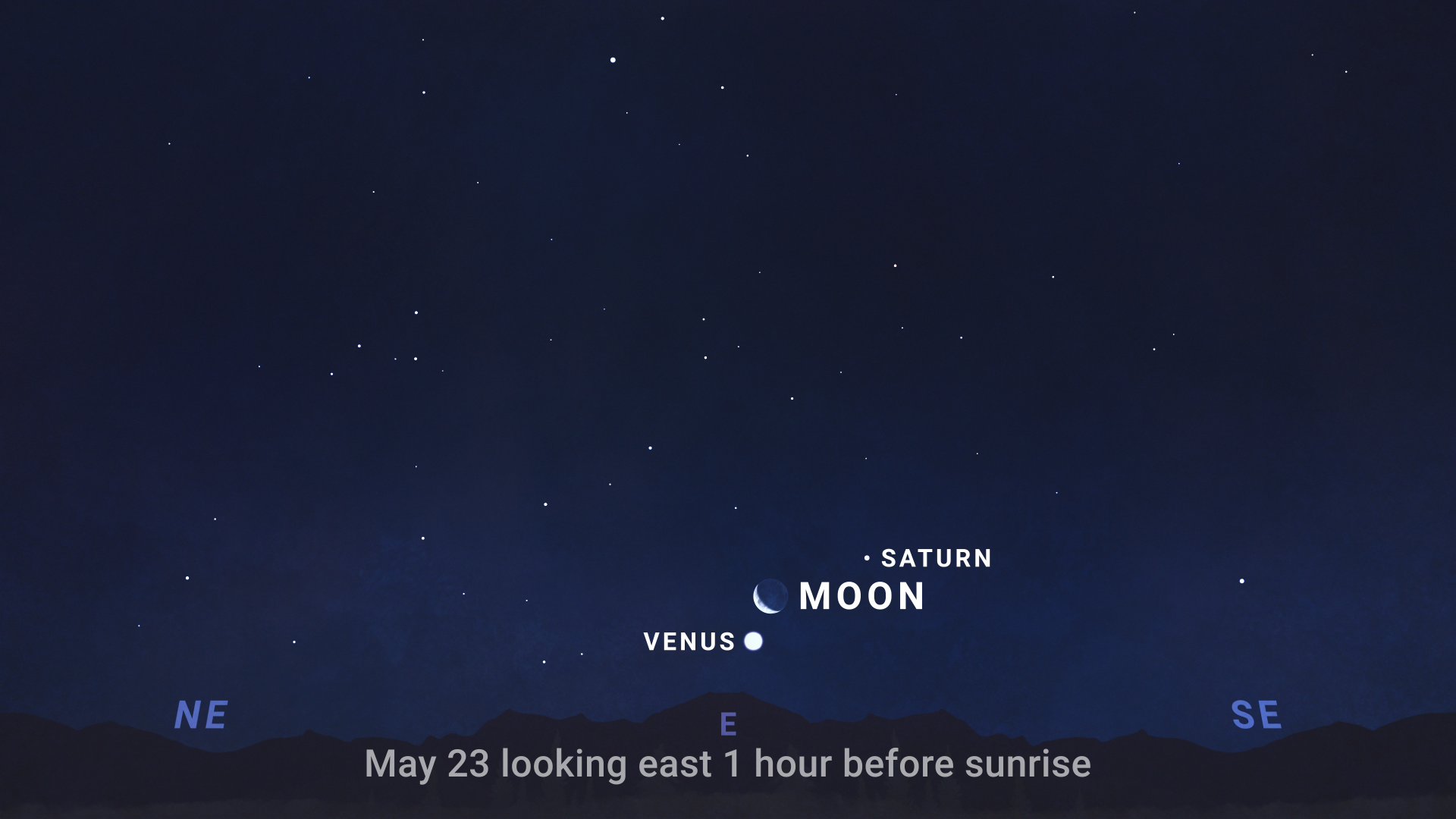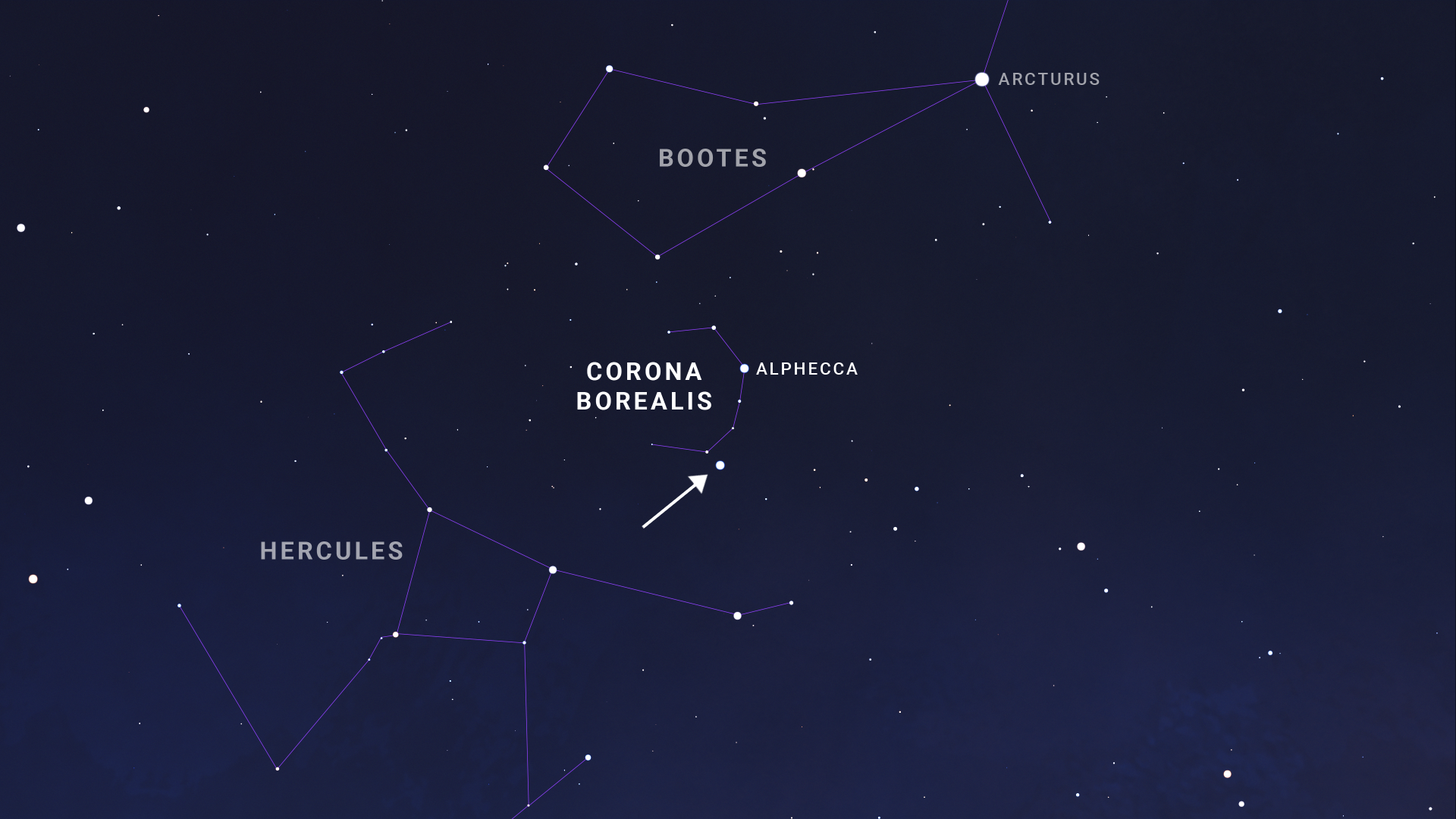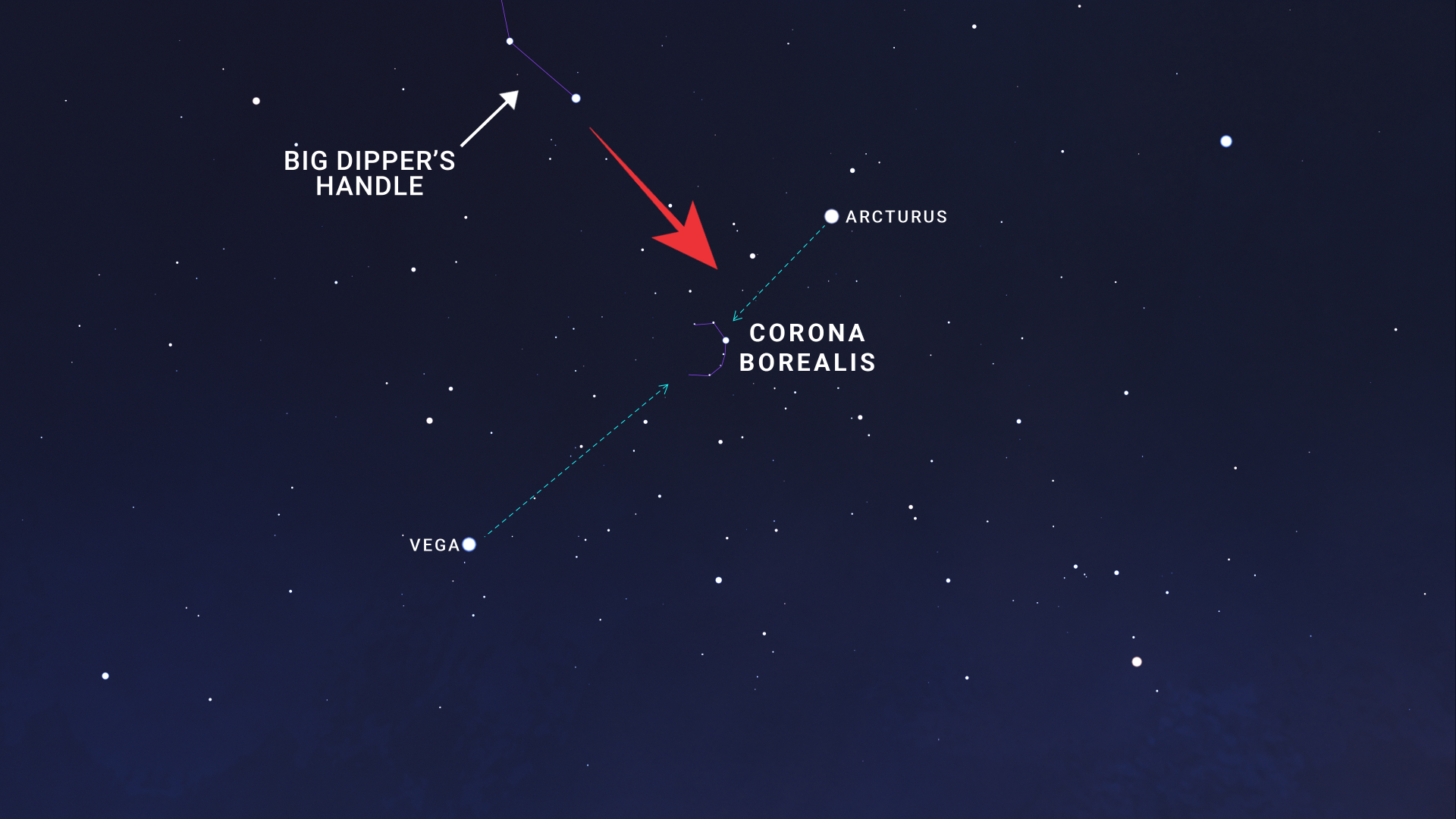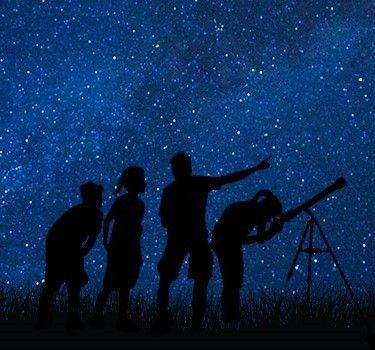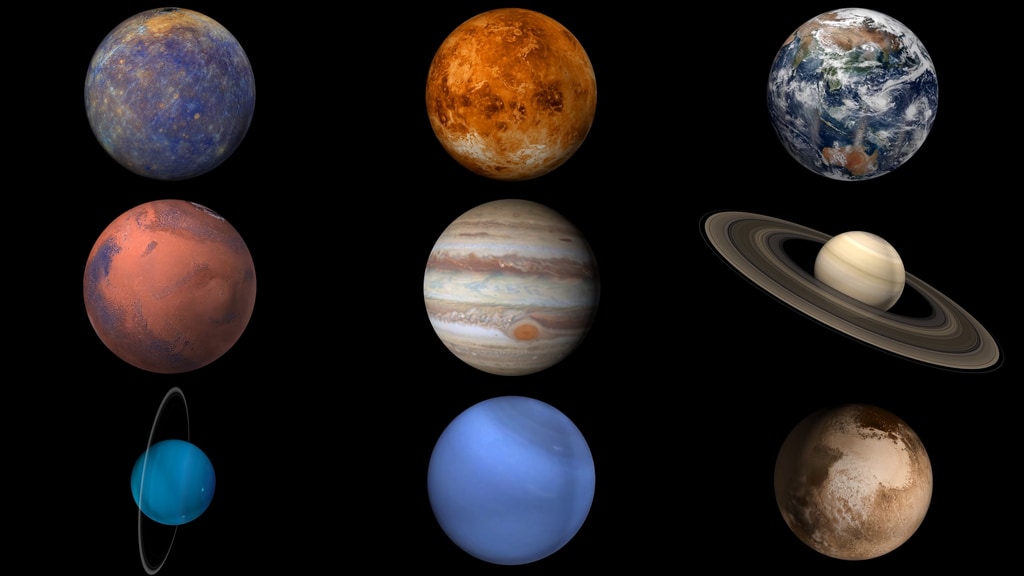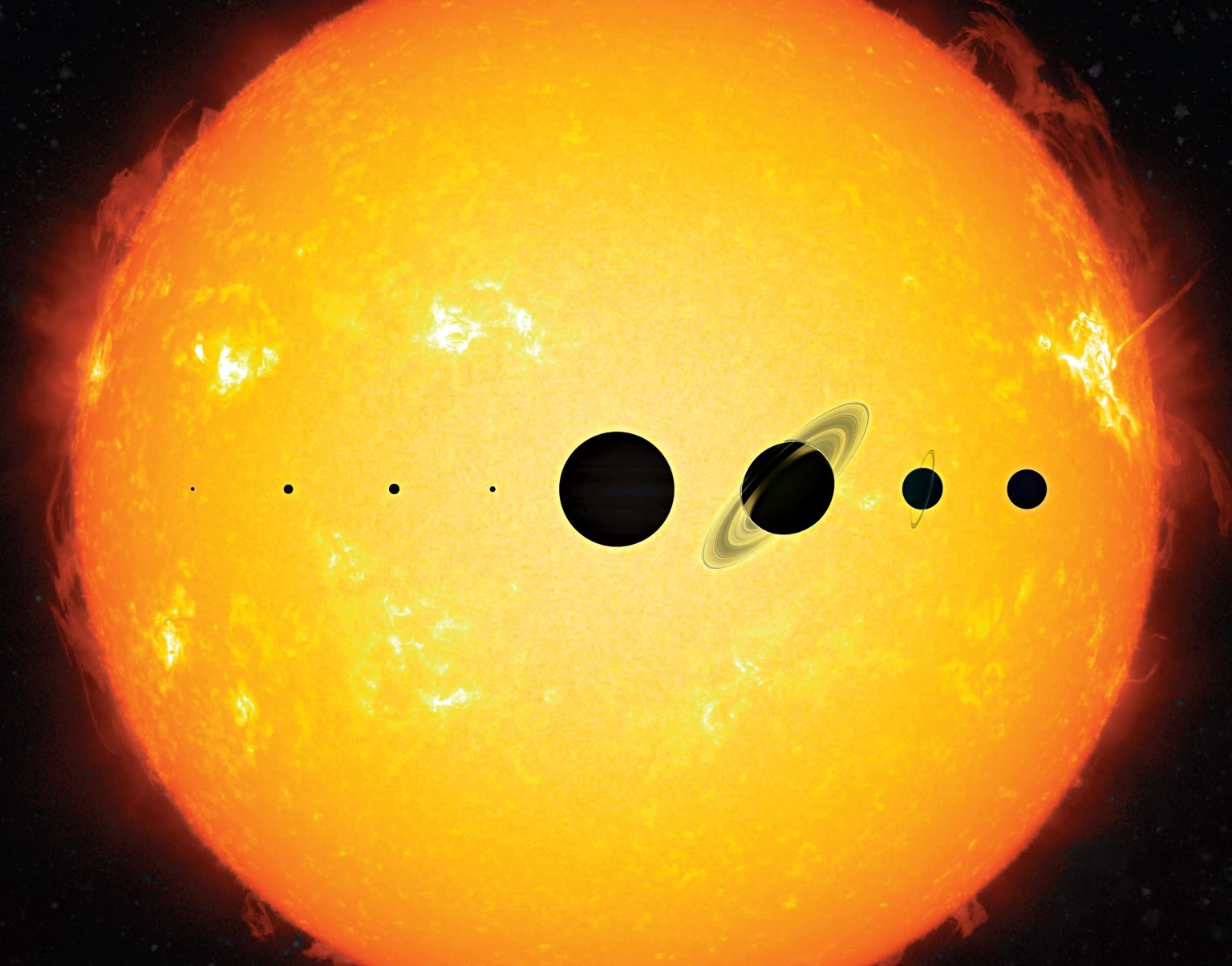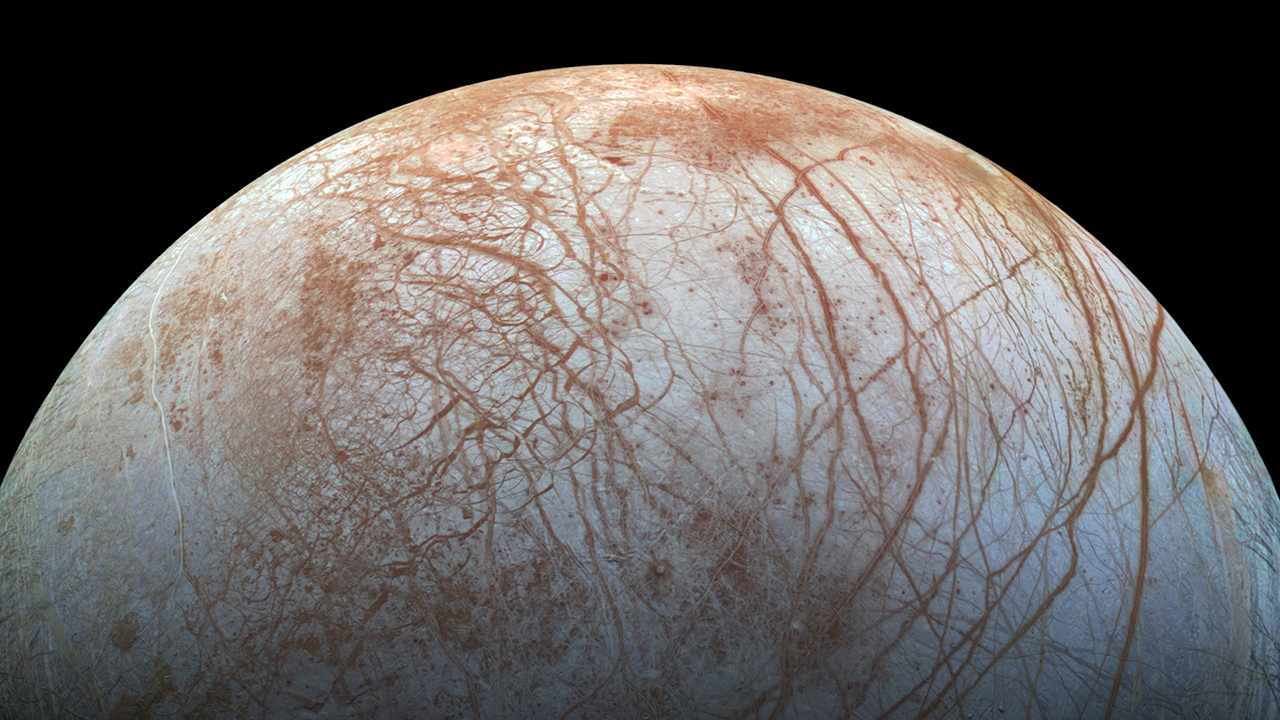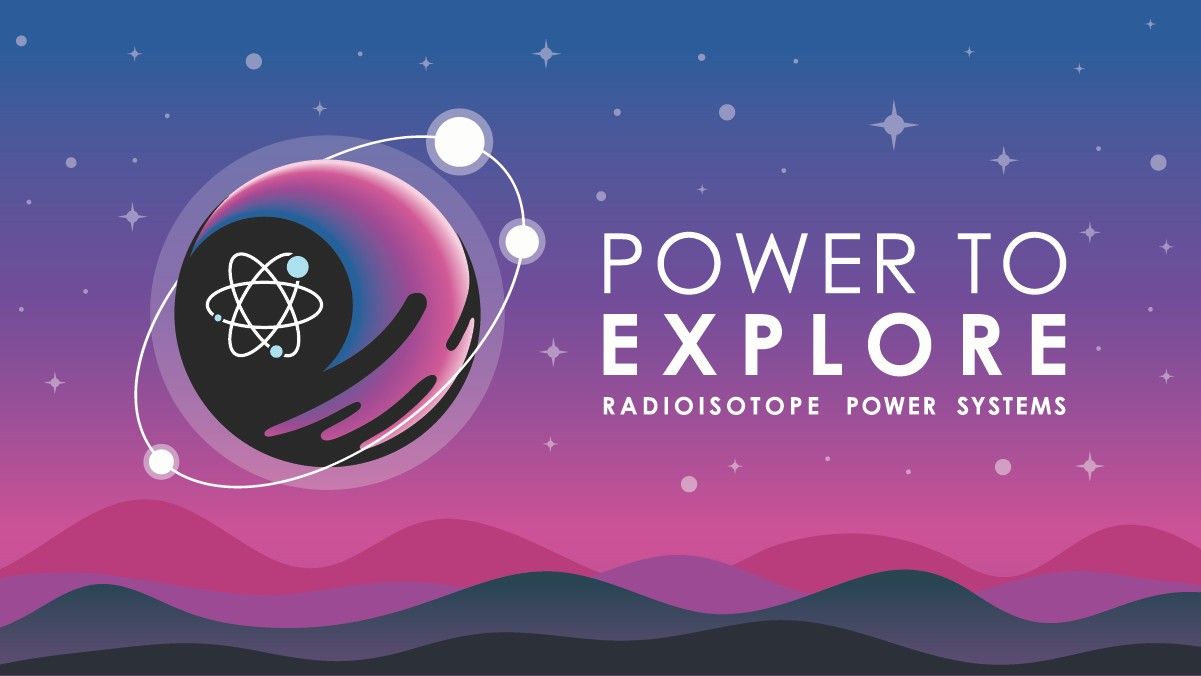What’s Up: May 2025 Skywatching Tips from NASA
Eta Aquarids & Waiting for a Nova! The first week of May brings the annual Eta Aquarid meteors, peaking on the 6th. And sometime in the next few months, astronomers predict a “new star” or nova explosion will become visible to the unaided eye. Skywatching Highlights All Month – Planet Visibility: Daily Highlights May 6 […]

Eta Aquarids & Waiting for a Nova!
The first week of May brings the annual Eta Aquarid meteors, peaking on the 6th. And sometime in the next few months, astronomers predict a “new star” or nova explosion will become visible to the unaided eye.
Skywatching Highlights
All Month – Planet Visibility:
- Venus: Appears very bright and low in the east in the hour before sunrise all month.
- Mars: Easy to find in the west in the first few hours of the night, all month long. Sets around midnight to 1 a.m. local time.
- Jupiter: Shines brightly in the west following sunset all month. Early in the month it sets about two hours after the Sun, but by late May it’s setting only an hour after sunset.
- Saturn: Begins the month next to Venus, low in the eastern sky before sunrise. Quickly separates from Saturn and rises higher in the sky each day before dawn.
Daily Highlights
May 6 – Eta Aquarid Meteors – The peak of this annual shower is early on the morning of May 6th. The two or three nights before that are also decent opportunities to spy a few shooting stars. On the peak night this year, the Moon sets by around 3 a.m., leaving dark skies until dawn, for ideal viewing conditions. Seeing 10-20 meteors per hour is common for the Northern Hemisphere, while south of the equator, observers tend to see substantially more.
May 3 – Mars & Moon: The first quarter Moon appears right next to the Red Planet on the 3rd. Find them in the west during the first half of the night that evening.
All month – Venus & Saturn: Low in the eastern sky each morning you’ll find bright Venus paired with much fainter Saturn. They start the month close together, but Saturn pulls away and rises higher over the course of the month.
All month – Mars & Jupiter: The planets to look for on May evenings are Mars and Jupiter. They’re visible for a couple of hours after sunset in the western sky.
All month – Corona Borealis: Practice finding this constellation in the eastern part of the sky during the first half of the night, so you have a point of comparison when the T CrB nova appears there, likely in the next few months.
Transcript
What’s Up for May? Four bright planets, morning and night, a chance of meteor showers, and waiting for a nova.
May Planet Viewing
For planet watching this month, you’ll find Mars and Jupiter in the west following sunset. Mars sticks around for several hours after it gets dark out, but Jupiter is setting by 9:30 or 10 p.m., and getting lower in the sky each day. The first quarter Moon appears right next to the Red Planet on the 3rd. Find them in the west during the first half of the night that evening.
In the morning sky, Venus and Saturn are the planets to look for in May. They begin the month appearing close together on the sky, and progressively pull farther apart as the month goes on. For several days in late May, early risers will enjoy a gathering of the Moon with Saturn and Venus in the eastern sky before dawn. Watch as the Moon passes the two planets while becoming an increasingly slimmer crescent. You’ll find the Moon hanging between Venus and Saturn on the 23rd.
Eta Aquarid Meteor Shower
Early May brings the annual Eta Aquarid meteor shower. These are meteors that originate from Comet Halley. Earth passes through the comet’s dust stream each May, and again in October. Eta Aquarids are fast moving, and a lot of them produce persistent dust trains that linger for seconds after the meteor’s initial streak.
This is one of the best annual showers in the Southern Hemisphere, but tends to be more subdued North of the Equator, where we typically see 10-20 meteors per hour. On the peak night this year, the Moon sets by around 3 a.m., leaving dark skies until dawn, for ideal viewing conditions. While the peak is early on the morning of May 6th, the two or three nights before that are also decent opportunities to spy a few shooting stars.
Waiting for a Nova
Astronomers have been waiting expectantly for light from a distant explosion to reach us here on Earth. An event called a nova is anticipated to occur sometime in the coming months. Some 3,000 light years away is a binary star system called T Coronae Borealis, or “T CrB.” It consists of a red giant star with a smaller white dwarf star orbiting closely around it. Now the giant’s outer atmosphere is all puffed up, and the dwarf star is close enough that its gravity continually captures some of the giant’s hydrogen. About every 80 years, the white dwarf has accumulated so much of the other star’s hydrogen, that it ignites a thermonuclear explosion. And that’s the nova.
T Coronae Borealis is located in the constellation Corona Borealis, or the “Northern Crown,” and it’s normally far too faint to see with the unaided eye. But it’s predicted the nova will be as bright as the constellation’s brightest star, which is about as bright as the North Star, Polaris. You’ll find Corona Borealis right in between the two bright stars Arcturus and Vega, and you can use the Big Dipper’s handle to point you to the right part of the sky. Try having a look for it on clear, dark nights before the nova, so you’ll have a comparison when a new star suddenly becomes visible there.
Now, you may have heard about this months ago, as astronomers started keeping watch for the nova midway through 2024, but it hasn’t happened yet. Predicting exactly when novas or any sort of stellar outburst will happen is tricky, but excitement began growing when astronomers observed the star to dim suddenly, much as it did right before its previous nova in 1946. When the nova finally does occur, it won’t stay bright for long, likely flaring in peak brightness for only a few days. And since it’s not predicted again for another 80 years, you might just want to join the watch for this super rare, naked eye stellar explosion in the sky!
Here are the phases of the Moon for May.
You can stay up to date on all of NASA’s missions exploring the solar system and beyond at NASA Science.
I’m Preston Dyches from NASA’s Jet Propulsion Laboratory, and that’s What’s Up for this month.


































